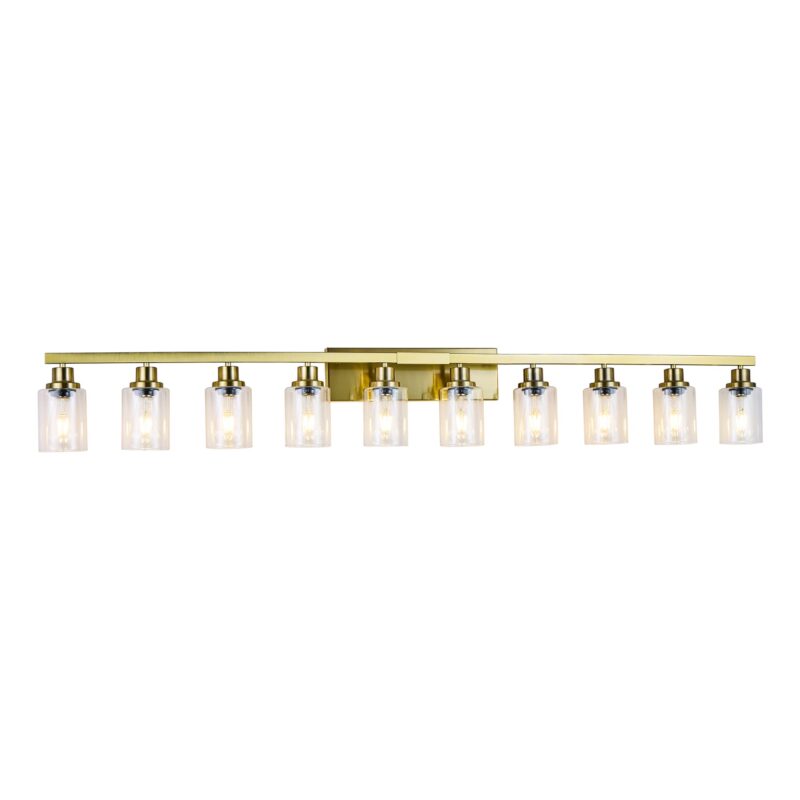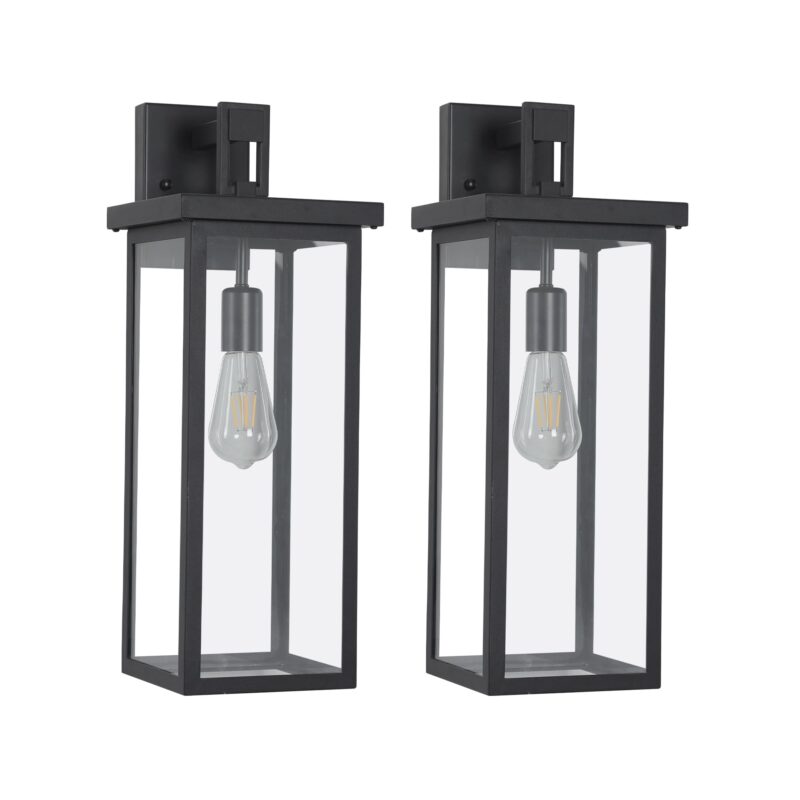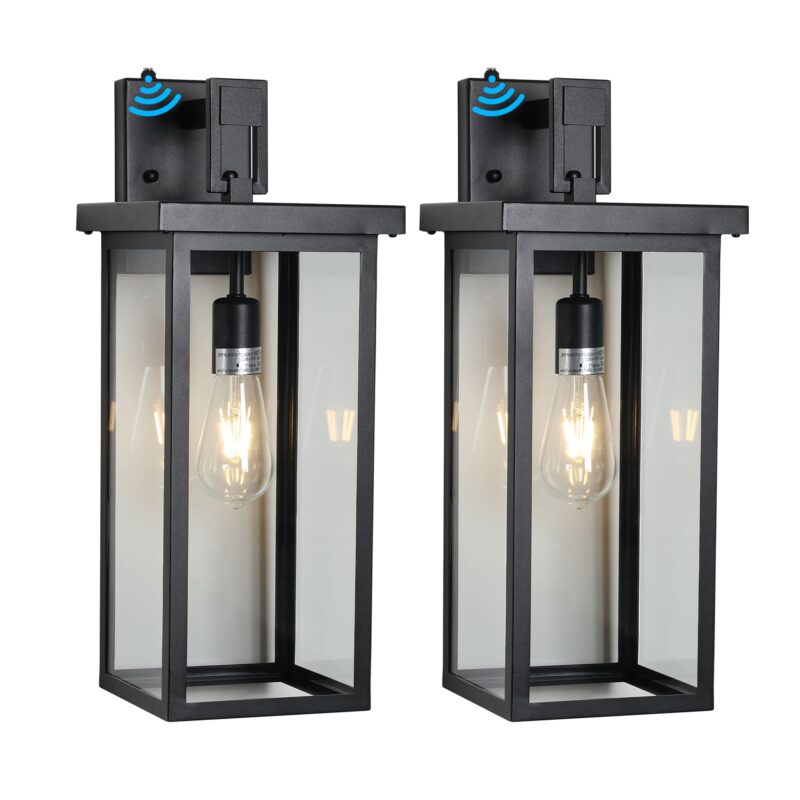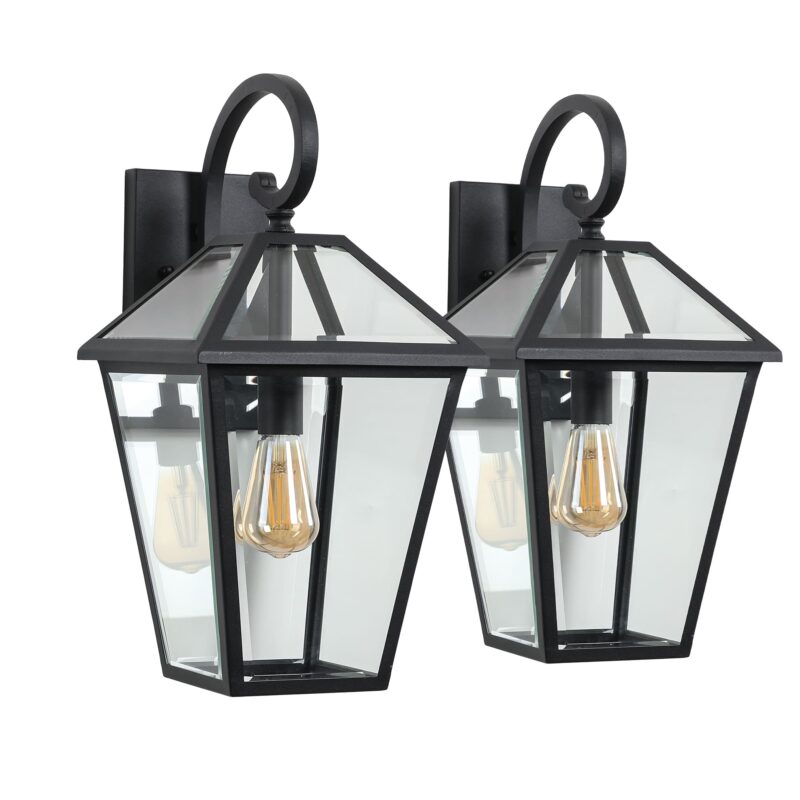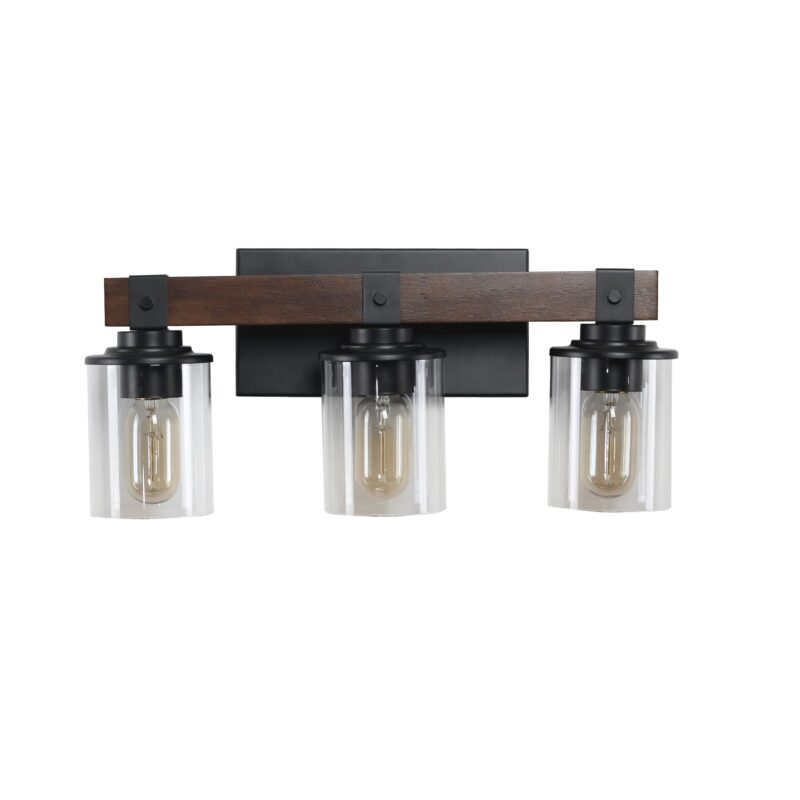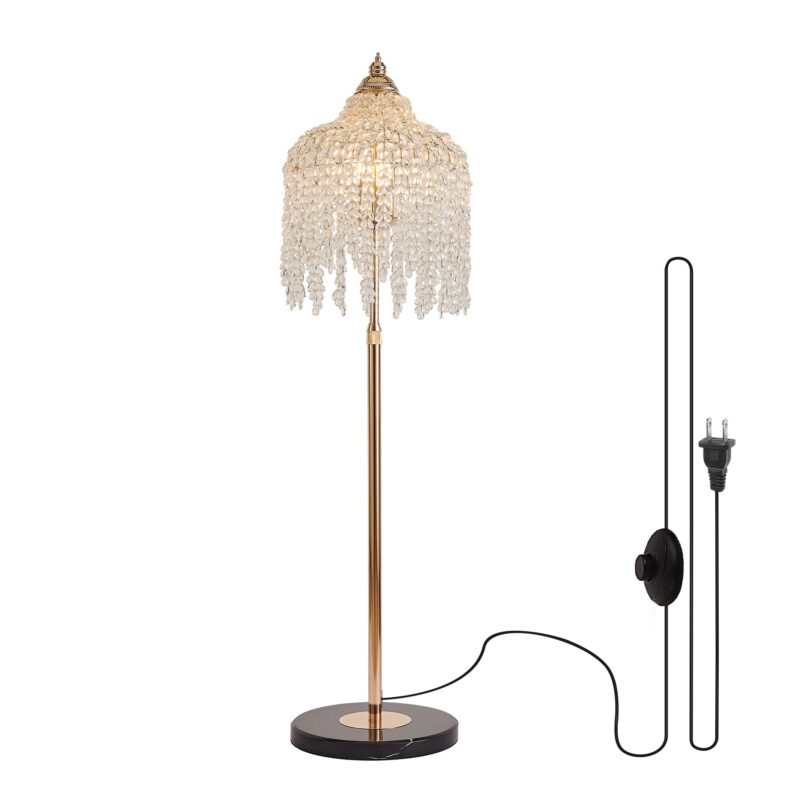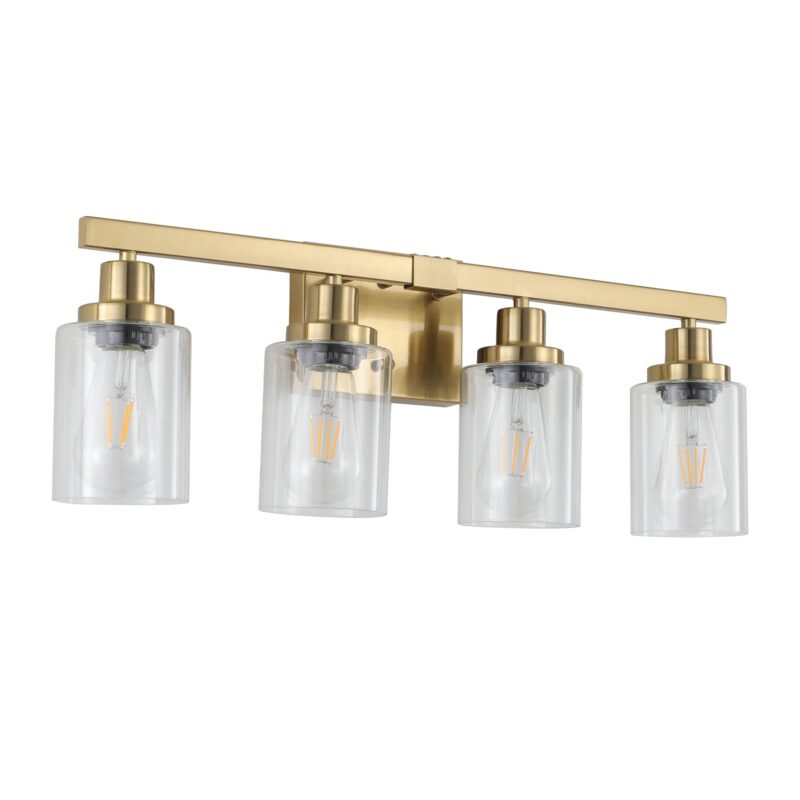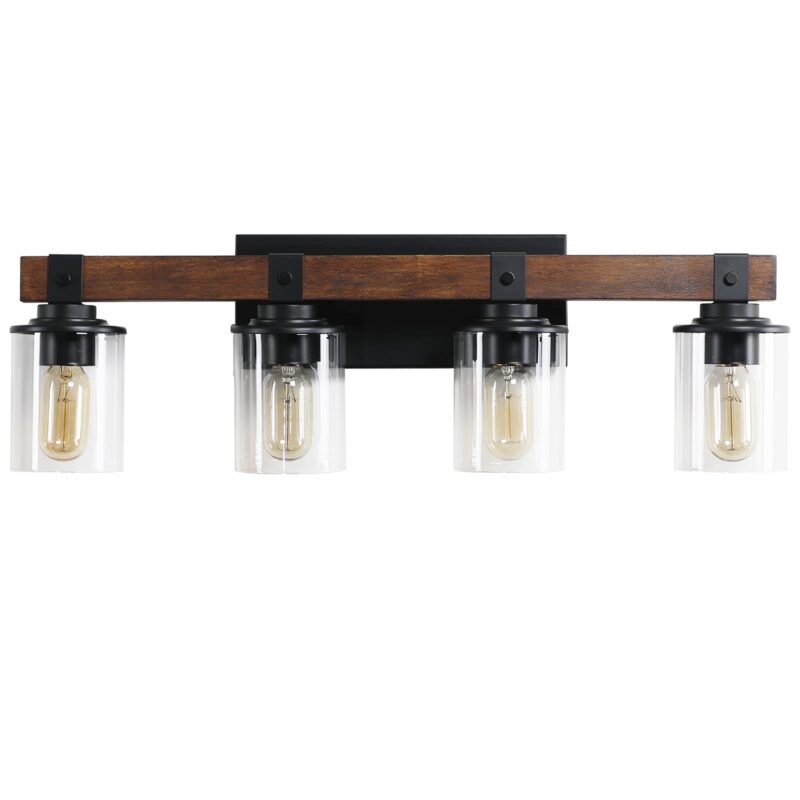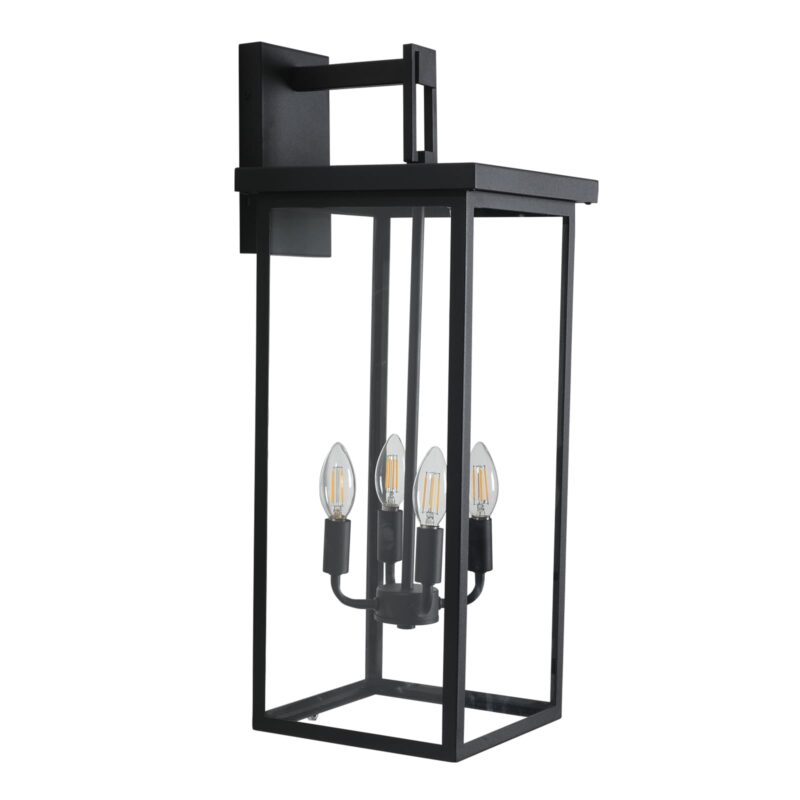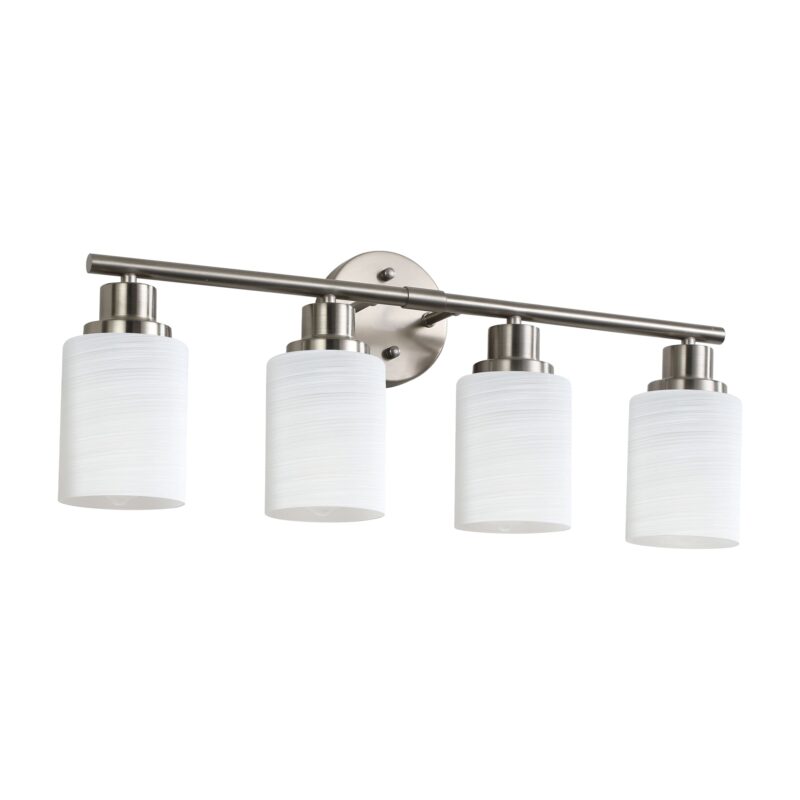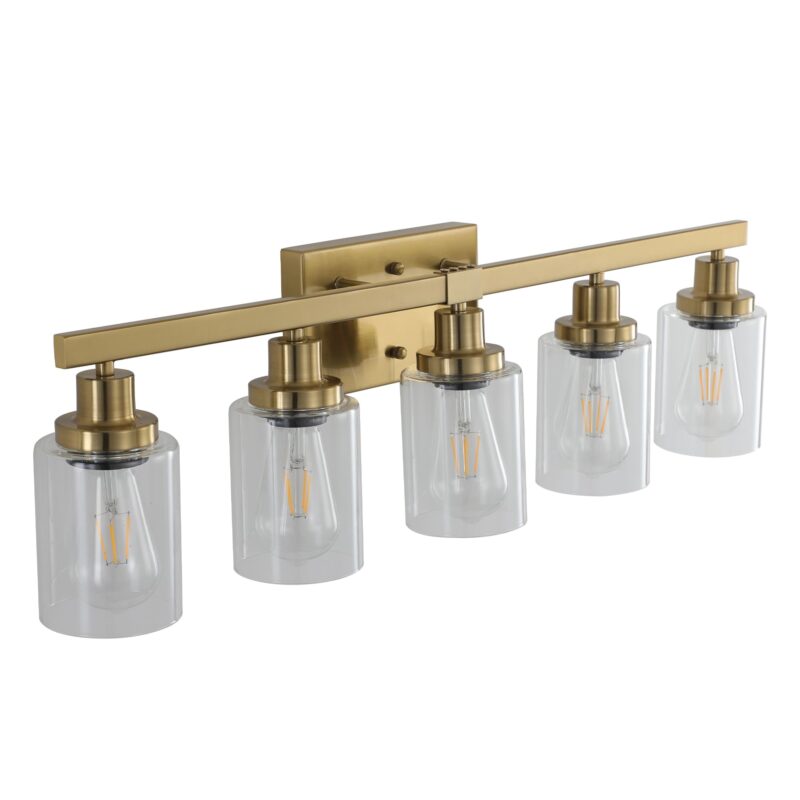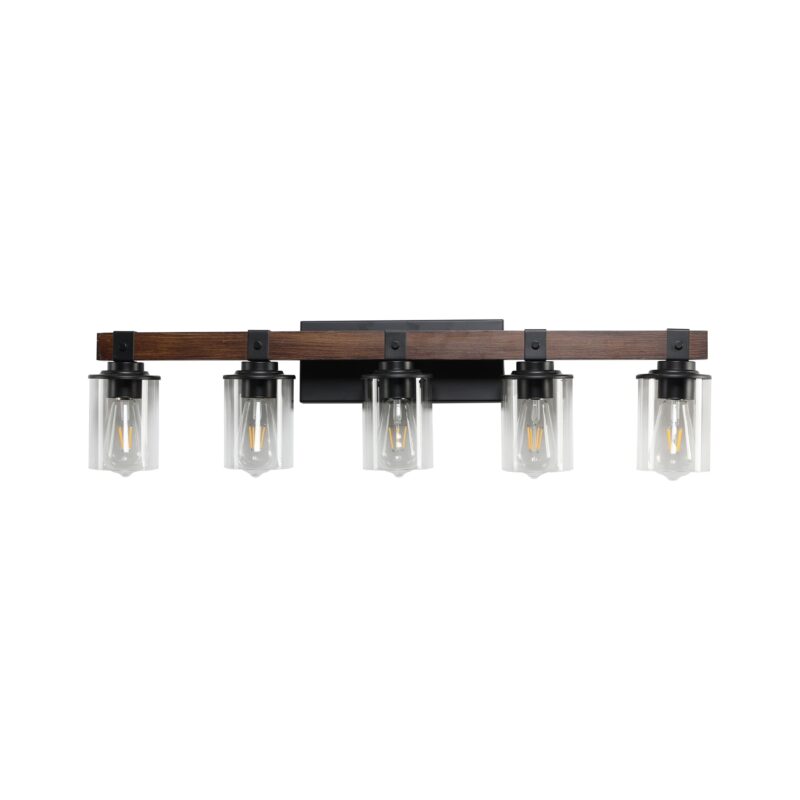Dropshipping vs. Local Warehousing: Which Model is Best for Your Lighting Store?
Imagine running a successful lighting store without ever touching a box. No warehouse space, no packing tape, no inventory risk. Just a beautiful website, a paying customer, and a supplier who handles all the hard parts. This is the seductive dream of dropshipping, a business model that promises maximum reward with minimum risk.
But what happens when that “risk-free” order takes three weeks to arrive from an anonymous overseas factory? What happens when it shows up damaged, or it’s the wrong color? Suddenly, the dream becomes a customer service nightmare that puts your brand’s hard-earned reputation on the line.
This guide will provide a brutally honest, deeply detailed comparison between the dropshipping model and its powerful alternative: partnering with a supplier who utilizes local, US-based warehousing. We will dissect every aspect—from hidden costs to customer psychology—to give you a clear, unambiguous framework for deciding which path is truly right for your business. Your fulfillment model is a cornerstone of your entire business strategy, a concept we explore in our ultimate guide for independent lighting retailers.
Table of Contents
Defining the Models – What Are We Really Talking About?
To make a smart decision, you first need to understand exactly how each of these models works. They sound similar, but in practice, they create two vastly different realities for you and your customers.
What is the Dropshipping Model, and How Does It Actually Work?
Dropshipping is a retail fulfillment method where a store doesn’t keep the products it sells in stock. It’s a chain of events that looks like this:
- You, the retailer, list a supplier’s product for sale on your website. You do not own this product.
- A customer purchases the product from your website and pays you the full retail price.
- You then forward that order to your supplier and pay them the lower, wholesale price.
- The supplier ships the product directly to your customer from their warehouse (which is very often located overseas).
The allure is obvious. It appears to be a “zero-risk, zero-inventory” dream. It’s the fastest and cheapest way to launch an e-commerce business, allowing you to offer a massive selection of products with almost no upfront financial commitment.
What is the Local Warehousing Model? (The Hybrid Approach)
The local warehousing model is a smarter, more professional hybrid approach. It’s designed for serious retailers who want to build a real brand. It works like this:
- You partner with a supplier who has already done the hard work of importing and stocking products in a US-based warehouse.
- You carry a small, curated selection of their bestsellers in your own physical showroom for customers to see and touch.
- You use your supplier’s US-based inventory as your “virtual stockroom” to quickly replenish items you sell and to fulfill special orders for the thousands of other products in their catalog.
This model gives you the best of both worlds: the capital efficiency of not having to import everything yourself, combined with the speed, quality control, and brand integrity of a traditional retailer.
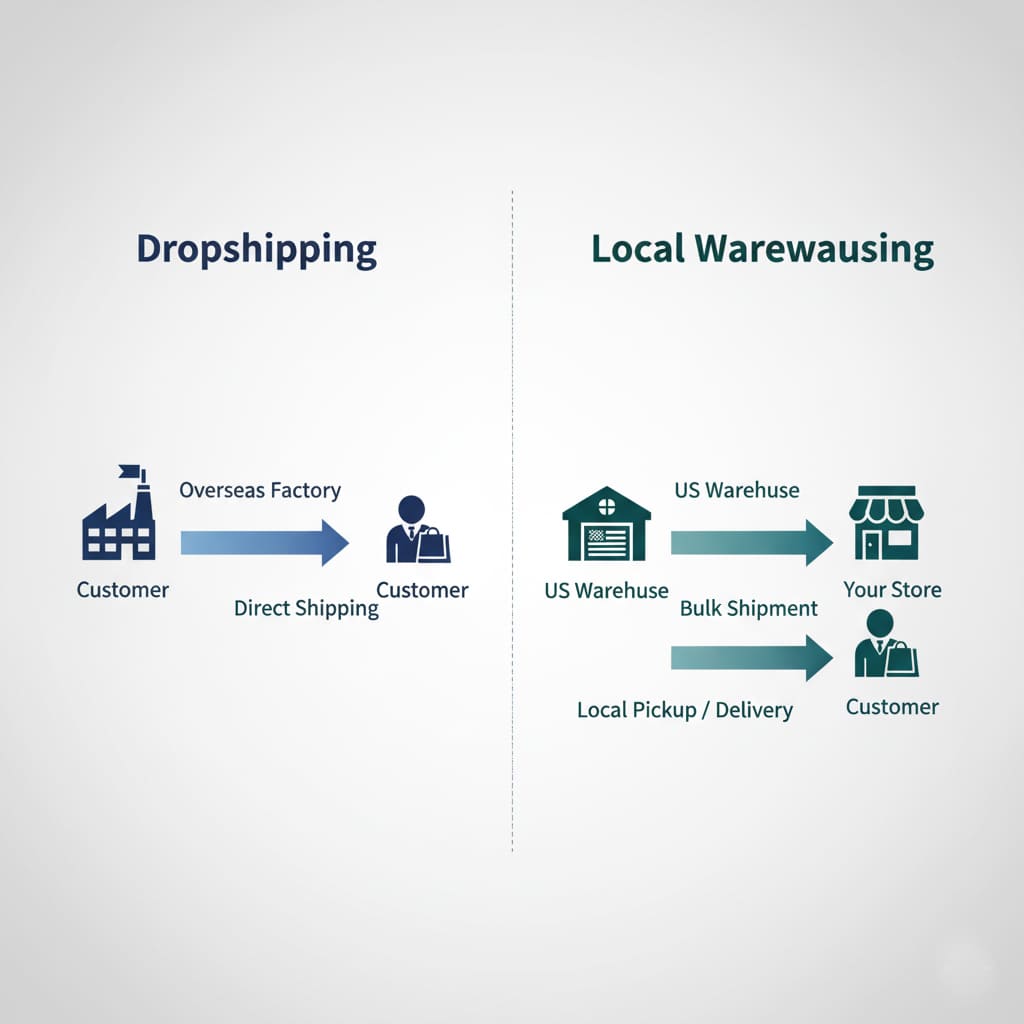
The Head-to-Head Comparison: 4 Critical Factors
Now, let’s put these two models in the ring and compare them across the four factors that matter most to your success: cost and risk, speed and customer experience, quality and brand control, and ultimately, profitability.
Factor 1: Upfront Cost & Inventory Risk – Which Model is Truly “Cheaper”?
On the surface, this seems like an easy win for dropshipping. But the true financial picture is more nuanced.
The Undeniable Advantage of Dropshipping’s Zero Upfront Investment
Let’s be clear: in terms of starting costs, dropshipping is the undisputed champion. It requires almost no upfront capital for inventory. This makes it an incredibly accessible entry point into e-commerce. However, as we will see, this initial advantage comes with significant downstream costs.
The Local Warehousing Model: The Power of a Low MOQ
Partnering with a modern, local supplier doesn’t require a massive investment either. Thanks to flexible Minimum Order Quantity (MOQ) policies, you can stock a curated showroom with a small, strategic investment. You’re not buying containers; you’re buying a handful of your chosen bestsellers. This approach requires a small amount of capital but, as we’ll explore, provides an enormous return in control and profitability. This is the key that unlocks the professional retail model without requiring huge financial risk. Master this essential concept in our definitive guide to MOQ.
| Financial Factor | Dropshipping Model | Local Warehousing Model (Low MOQ) | Traditional Retail (High MOQ) |
|---|---|---|---|
| Initial Inventory Cost | $0 | Low (e.g., $1,000 – $5,000) | Very High (e.g., $25,000+) |
| Inventory Holding Costs | $0 | Minimal | High |
| Risk of Dead Stock | Zero | Very Low | High |
| Impact on Cash Flow | Excellent (Initially) | Very Good | Poor |
While dropshipping wins on upfront cost, the local warehousing model offers a dramatically lower-risk profile than traditional retail, making it a highly capital-efficient option. The impact on your finances is profound. See how in our masterclass on Cash Flow Management.
Factor 2: Shipping Speed & Customer Experience – Who Wins the Delivery Race?
This is where the dropshipping model begins to fall apart. In a world where customers expect Amazon-like speed, a slow and unpredictable shipping experience is a brand killer.
The Achilles’ Heel of Dropshipping: The Long and Unpredictable Wait
The vast majority of dropshipping suppliers for consumer goods are based overseas. This means that a typical shipping timeline looks like this: 3-5 days for the factory to process the order, followed by 15-30 days of slow, often untrackable international ePacket shipping. The result is a total wait time of 3 to 5 weeks. This is an eternity in modern e-commerce. It leads to a flood of “Where is my order?” emails, customer anxiety, and a high rate of cancellations and chargebacks.
The Decisive Advantage of Local Warehousing: The Power of Speed
When the inventory is already on US soil, the timeline is dramatically accelerated. An order is processed in 1-2 days and then shipped via a reliable domestic carrier like UPS or FedEx in 3-5 days. The total time from click to doorstep is just 4 to 7 days. This is the professional, reliable experience that customers expect and deserve. It’s a key reason why your choice of supplier matters so much. Explore the full strategic impact of domestic warehousing here.
The Nightmare of Dropshipping Returns
What happens when a customer wants to return a dropshipped item? It’s a logistical nightmare. You have to act as a middleman between your customer and a supplier in a different country, navigating their complex and often unforgiving return policies. It’s slow, frustrating, and creates a terrible final impression of your brand. With a local warehouse partner, the process is simple: the customer sends the item back to a US address, and you get a quick resolution. A supplier’s return policy is a critical part of your own customer service. Learn more in our guide on Why Your Supplier’s Return Policy Matters.
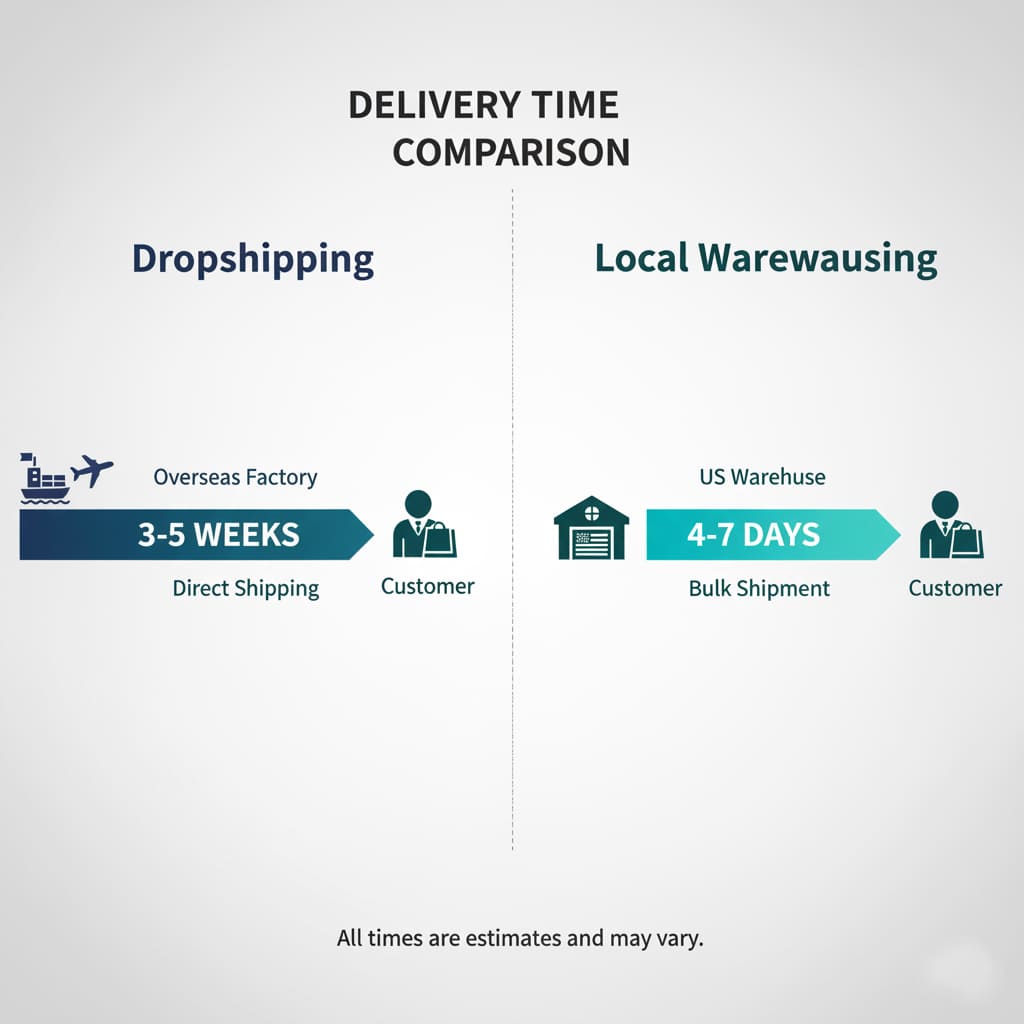
Factor 3: Product Quality & Brand Control – Who is Really in Charge of Your Reputation?
Your brand is your most valuable asset. It’s the trust and reputation you build with your customers. The fulfillment model you choose will determine whether you are in control of that reputation or if you are handing it over to a complete stranger.
The Blind Bet of Dropshipping: You Never See the Product
This is the fundamental, and frankly terrifying, flaw of the dropshipping model. You are selling a product that you have never personally seen, touched, or vetted. You are placing a blind bet that the quality of the materials, the safety of the wiring, and the accuracy of the color are what the supplier promised. When a customer receives a product that feels cheap or looks different from the picture, they don’t blame the anonymous factory. They blame you. Your brand takes the hit.
The Frustration of the Generic Brown Box
The “unboxing experience” is a huge part of modern e-commerce. Dropshipping offers none. The product arrives in a generic, often battered brown box, sometimes with foreign labels. There is no custom packaging, no “thank you” note from your brand, no opportunity to create a memorable and shareable moment. You are just an invisible middleman in a purely transactional process.
The Local Warehousing Advantage: You Are the Curator and Brand Custodian
This model puts you back in the driver’s seat. It allows you to be the quality gatekeeper. You can order samples, inspect products, and confidently stand behind every single item you sell. When you ship from your own store, you control the entire brand experience, from beautiful packaging to personalized notes. This is how you build a real brand and a loyal customer following, turning a simple transaction into a memorable experience. Get more ideas in our guide on creating an unforgettable customer experience. It all starts with choosing a partner you can trust. Learn how to find that partner in our guide to vetting suppliers.
Factor 4: Profit Margins & Pricing Power – Where is the Real Money?
At the end of the day, you’re in business to make a profit. The fulfillment model you choose has a direct and dramatic impact on your potential profitability.
The Razor-Thin Margins of the Dropshipping Game
Because the barrier to entry for dropshipping is essentially zero, it is an incredibly crowded and hyper-competitive market. Thousands of other stores are often selling the exact same products from the exact same suppliers. This inevitably leads to a “race to the bottom” on price. It’s very difficult to maintain healthy profit margins, which typically fall in the 15-25% range. You have to sell a huge volume of products just to make a decent living.
The Healthy Margins of a Curated Retail Model
Because the local warehousing model allows you to build a unique brand, offer expert service, control the customer experience, and sell products that aren’t available on a thousand other sites, you have pricing power. You are not just competing on price; you are competing on value. This allows you to command healthier retail margins, typically in the 40-55% range. You can sell less and make more.
| Factor | Dropshipping Model | Local Warehousing Model |
|---|---|---|
| Retail Price of a Pendant Light | $200 | $200 |
| Wholesale Cost | $150 (Higher cost per unit) | $100 (Better cost per unit) |
| Gross Profit Dollar | $50 | $100 |
| Gross Profit Margin | 25% | 50% |
The math is clear. You would have to sell two dropshipped pendants to make the same profit as selling one pendant through the local warehousing model. Your ability to price effectively is key. Learn more in our complete guide to pricing strategy.
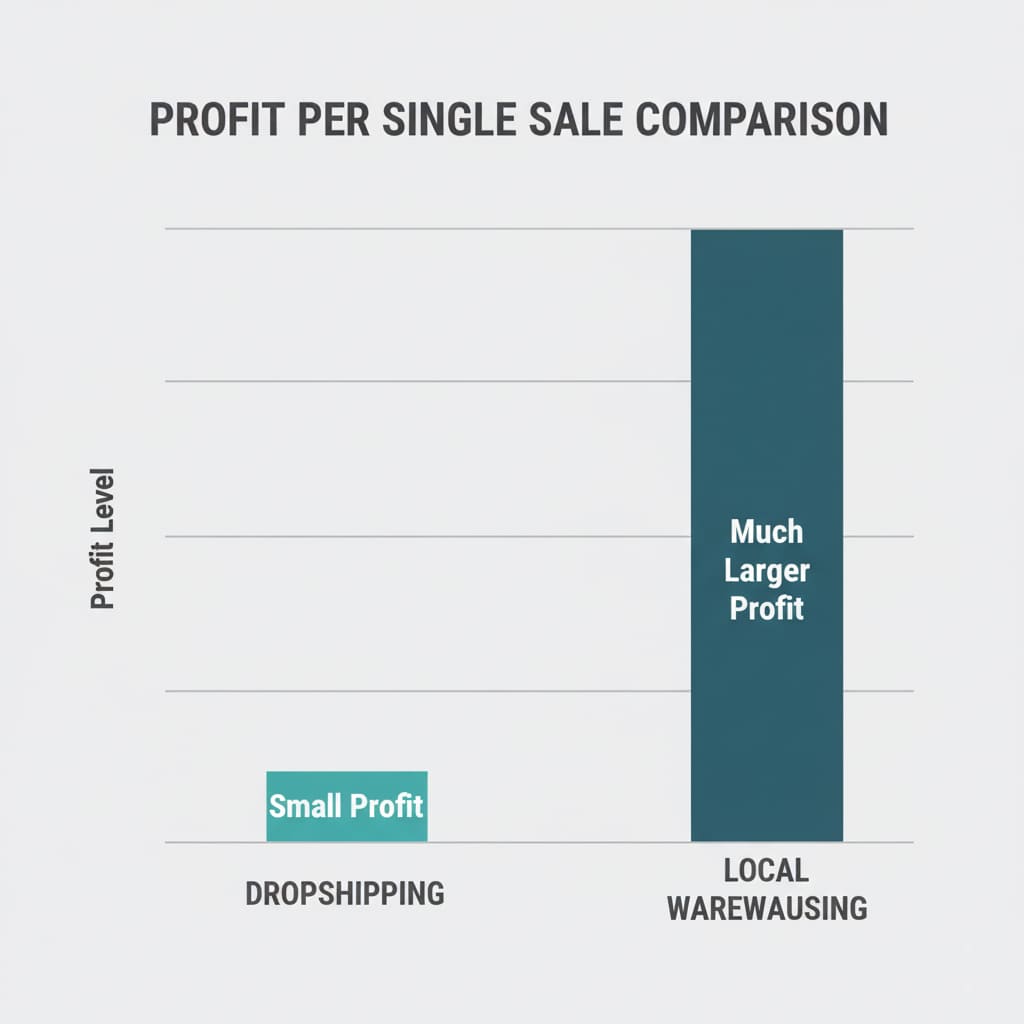
Strategic Fit – Which Model Aligns With YOUR Business Goals?
There is no single “best” model for everyone. The right choice depends entirely on what kind of business you want to build.
When Does Dropshipping Make Strategic Sense?
To be fair, dropshipping can be a brilliant tool when used for the right purpose. It makes sense in a few specific scenarios:
- For Market Testing: It is an unbeatable, zero-risk way to test a new product category. You can list 100 different floor lamps on your site to see which styles get the most clicks before you ever commit a dollar to inventory.
- For a Content-First Business: If your primary business is an influential blog or social media account, dropshipping can be an easy way to monetize your audience without the operational complexity of becoming a full-fledged retailer.
- For Niche Accessories: For items like specialty light bulbs or obscure replacement parts where it’s impossible to stock every variation, dropshipping can be a viable way to offer an “endless aisle.”
When is the Local Warehousing Model the Superior Choice?
For those who are serious about building a real, lasting business, the local warehousing model is almost always the superior choice.
- When You Want to Build a Brand: If your goal is to build a name with a reputation for quality, service, and a great customer experience, you need the control that this model provides.
- When You Serve Trade Professionals: Interior designers, builders, and contractors are a lucrative market segment. They demand speed, reliability, and quality assurance that the dropshipping model simply cannot provide. Learn how to cater to this professional market in our guide.
- When You Have a Physical Showroom: For a brick-and-mortar store, this model is the perfect complement. You can stock your bestsellers for instant gratification and use your partner’s warehouse to power a fast and reliable special-order business for everything else.
The Final Verdict: A Decision-Making Framework
Let’s bring it all together. The choice comes down to your priorities. Use this final checklist to make your decision clear.
- ?What is my primary goal? A quick and easy side hustle (Dropshipping) or a long-term, profitable brand (Local Warehousing)?
- ?How important is the customer experience to me? Am I okay with slow shipping and no brand control (Dropshipping), or is a premium experience essential (Local Warehousing)?
- ?What are my customers’ expectations? Are they willing to wait 4 weeks for a product (Dropshipping), or do they expect it in a few days (Local Warehousing)?
- ?What is my competitive advantage? Am I trying to be the absolute cheapest (Dropshipping), or am I competing on quality, service, and expertise (Local Warehousing)?
A Choice of Identity, Not Just Logistics
In the end, the choice between dropshipping and local warehousing is not just a logistical decision; it’s a decision about what kind of business you want to be. Dropshipping offers a low-cost entry point but forces you to compete on price in a crowded market with very little control over your brand’s destiny. The local warehousing model requires a small, strategic investment but empowers you to build a defensible, high-margin brand built on the pillars of quality, speed, and exceptional service.
One path is about being a middleman. The other is about being a merchant. The choice is yours.
Ready to Build a Real Brand?
The local warehousing model is the foundation for a sustainable, profitable retail business. Discover how Lighting Depot USA’s partnership program provides the speed, quality, and flexibility you need to succeed.
Now that you’ve chosen your fulfillment model, integrate it into your complete business strategy. Return to our ultimate guide for independent lighting retailers to build your comprehensive plan for success.
About LightingDepotUSA
The LightingDepotUSA Editorial Team specializes in wholesale lighting trends, showroom strategies, and supply chain solutions tailored for independent retailers across the U.S. With years of experience in both manufacturing and distribution, we provide practical insights to help small businesses grow, reduce costs, and stay competitive.
View all posts by LightingDepotUSA
